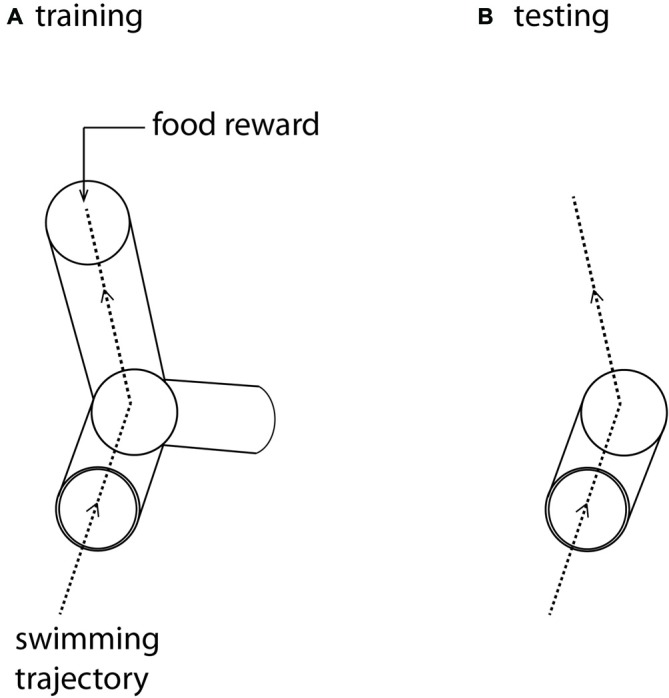Figure 1.

(A) The training maze. The three-dimensional Y-maze was made from clear Perspex and supported on a clear Perspex stand, enabling it to rotate around its axis. The maze was positioned in the center of a large cuboid tank (0.58 × 0.58 m and 0.56 m). Fish were placed in a start box at the front of the maze and given a rest period of 1 min before the start box door was removed, allowing them to swim into the Y-maze. Fish were trained to swim towards a food reward placed at the end of one of the arms, oriented so that the fish were trained to swim either forward, up and left or forward, down and right. (B) The test maze was identical to the first part of the training maze, but the arms were removed. After training in (A) fish were again placed in a start box at the front of this open maze. In test trials they were allowed to swim freely through the whole volume of the cuboid aquarium. The dotted lines represent the trajectory that trained fish swim in this particular trial (A), and the expected trajectory under test conditions (B).
